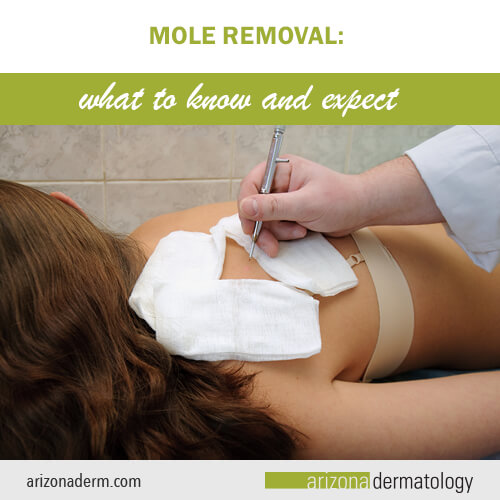 Your dermatologist may decide that a mole needs to be removed for a variety of reasons. Moles, also called nevi, are usually removed by shaving or excision. Mohs is not the standard of care for Malignant Melanoma due to special stains required to determine: Mitosis, Breslow depth, Clark’s level and other important when diagnosing and treating planning for melanoma.
Your dermatologist may decide that a mole needs to be removed for a variety of reasons. Moles, also called nevi, are usually removed by shaving or excision. Mohs is not the standard of care for Malignant Melanoma due to special stains required to determine: Mitosis, Breslow depth, Clark’s level and other important when diagnosing and treating planning for melanoma.
Mole removal by shaving
Shaving a mole is a simple procedure that happens right in the dermatologist’s office. It is not that different from having a skin biopsy, which may already have been done.
First the area is cleansed, and then anesthetic is injected to numb the area. It may take several minutes for the anesthetic to take effect. Once the area is completely numb, the doctor will shave the mole flush with the skin’s surface or slightly deeper. The wound is then cauterized or a solution is applied to stop the bleeding. The wound is covered with a bandage and home care instructions are discussed. The mole may be sent off to a lab to be tested or to ensure no precancerous or cancerous tissue was left behind.
Mole removal by excision
During excision, the surgeon maps the mole and prepares to cut it out of the deeper layers of the skin. The treatment area is cleansed and anesthetic is injected. Once the area is numb, the surgeon will use a scalpel to cut out the mole along with a border of healthy tissue. The wound will then be stitched closed with either dissolving or removable stitches and covered with a bandage. The mole may be sent off to a lab to be tested or to ensure no precancerous or cancerous tissue was left behind.
After mole removal surgery
Most people tolerate mole removal very well and are able to resume normal activities immediately. Cleanse the area once or twice daily with a gentle soap and apply petroleum jelly three to five times a day until the area heals. It is best if you keep the area covered and avoid picking at any scabs.
Do not use an over-the-counter topical antibiotic like Neosporin as these types of products are known to produce contact dermatitis (allergic rash). If you need a topical antibiotic, your doctor may prescribe mupirocin or a similar medication that doesn’t tend to cause allergic reactions. If you have stitches that need to be removed, your doctor will schedule an appointment to do so.
The most common complications after mole removal surgery are bleeding and infection. Some people can experience an allergic reaction to the cleanser or anesthetic used. These complications are generally minor and easily resolved.
It is normal for a little bleeding to occur shortly after surgery. Apply pressure with a clean cloth for up to 20 minutes to stop the bleeding. If that doesn’t work, call the doctor.
It is normal for the area to remain red for a few days after the procedure. However, if the redness extends more than a centimeter from the wound, if you see pus, or if you develop a fever or significant pain, call your doctor immediately. These are signs of infection.
Scars after mole removal
Many people are concerned about scarring after mole removal surgery. The best way to minimize scarring is to follow post-surgical instructions and keep the area clean, moist and covered. Contrary to popular belief, applying vitamin E to the healing wound will not reduce scarring. In fact, studies show that vitamin E actually slows healing and can make scarring worse.
If you notice any new moles, changes to existing moles, or anything “suspicious” on your skin, contact your dermatologist to schedule a skin check immediately.


